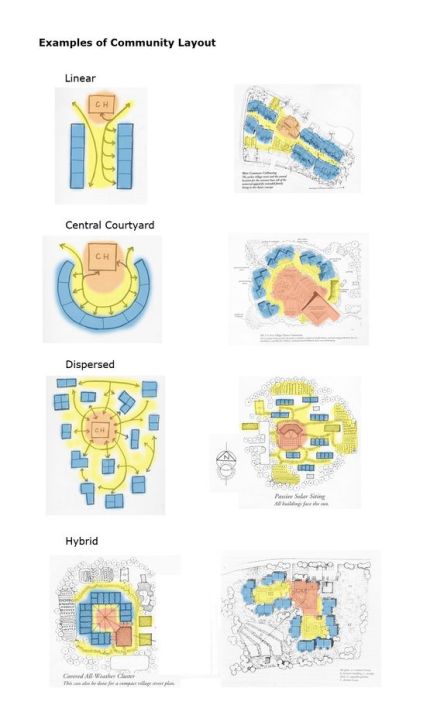In a society where it’s increasingly hard to even start a decent career and loneliness is reaching epidemic proportions it might be time to think of alternatives to the near-ubiquitous private residence.
What is Co-Housing?
According to the Canadian Cohousing Network “cohousing is a concept that came to North America in 1988 from Denmark where it emerged over 25 years ago. It describes neighbourhoods that combine the autonomy of private dwellings with the advantages of shared resources and community living.” Today 10% of all new housing built in Denmark follows the co-housing model, and co-housing is on the rise in other places that value sustainable communities.
Further definitions of cohousing and the Seven Co-Operative Principles can be found on the website of the Co-operative Housing Association of Eastern Ontario (CHASEO). Describing itself as “a co-operation of co-ops” providing “a collective voice in Eastern Ontario to represent their interests with government, agencies and other groups,” CHASEO indicates member co-ops listings in Ottawa on this page. The Co-operative Housing Federation of Canada has more information on co-housing including their activity in Ontario.
Co-housing vs. Co-ops
The Vancouver Cohousing website states that
In co-ops, the cooperative owns the unit. Members purchase shares and pay housing charges that give them the right to occupy the unit. In cohousing, individual households purchase their own units, or rent from members of the community.
and notes here that “cohousing communities consist of privately owned homes plus extensive common areas.” Low-income co-op housing is eligible for federal funding.
Many of the basic principles of co-housing are at play in an organization like the venerable Centretown Citizens Ottawa Corporation (CCOC), “a community-based, tenant and member directed, non-profit housing organization whose mission is to create, maintain and promote housing for low and moderate income people.” It would be great to see the CCOC build new dwellings with smaller private quarters, and more extensive shared facilities for dining, recreating, gardening and transportation.
* * *
There are many ways of organizing a workable balance of public and shared space. But local innovation in this realm is uncommon, and no doubt hindered by zoning and building regulations. If you can share any experience in this domain, including examples of good local co-housing, please get in touch!

Varieties of co-housing floor plans by Nathan Majeski and Linda Hallgren. Blue = Private; Orange = Public; Yellow = Intermediate (Buffer) Spaces. Click image for link to source.
For house swapping click here here. For credit unions and other co-ops click here. For cohousing ideas from around the world click on the image below and visit the Slow Ottawa ‘Cohousing’ board on Pinterest.
Please share this page with the buttons below, especially via Facebook as it really helps get the word out!


I have been interested in cohousing for over 40 years. I just happen to click on your site. I thought that you would like to know and may be correct the info on your site. Cohousing was in the development stage in Denmark from 1960 to 1966 with help from the Danish government to six university professors who developed the concept after the failure of the Communes of the late 50. In 1967 the first 50 members community was established. By the early 1990 over 130 to 140 projects were in existence, thanks to much assistance from the Danish government. This is over 48 years ago. Presently the trend in Denmark and Holland is that cohousing for seniors (55 plus) is over 50 % of all the new projects coming in existence. Much assistance is provided by governments following a study showing that aging in cohousing with the basic principle of CO-CARE increased from 10 to 12 years the need to go in assisted living accommodations, saving among other things millions to Governments. Note: It effectively came to America 1987/88. You can verify the info on the wikepedia web site and other sources. Norm
LikeLike